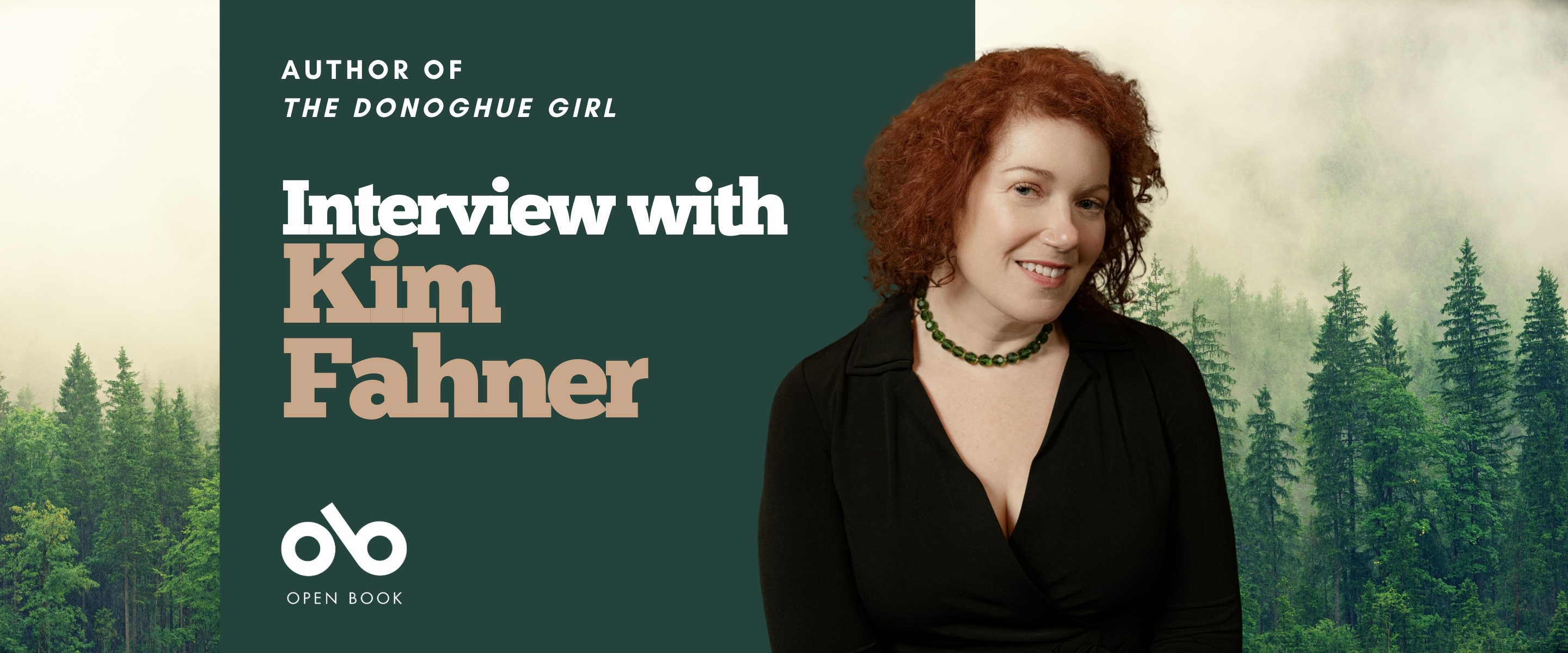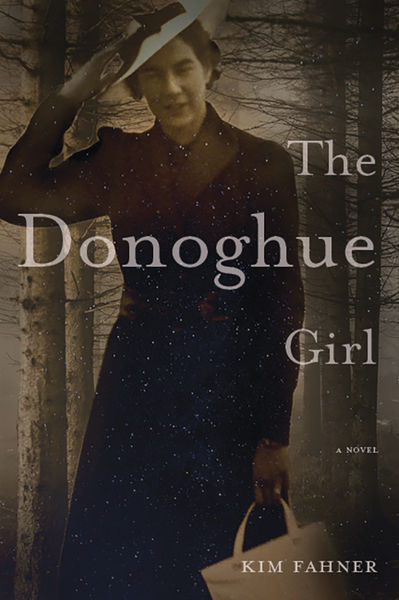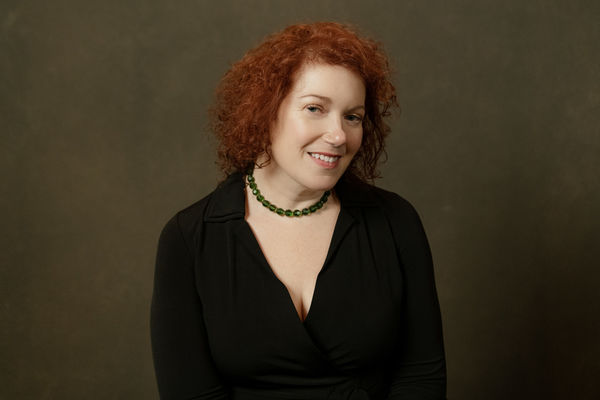A Young Woman in Pre-WWII Northern Ontario is Torn Between Her Hometown, Her Family, and Her Desire for More in The Donoghue Girl
Great historical fiction is a pillar of the literary world, with so many characters and places made present again on the page with a bearing on the world we live in right at this moment. But, there are still so many stories to tell, especially about areas of rural Canada, and, given the subject we're looking at today, rural Northern Ontario.
Sudbury stalwart Kim Fahner knows the region well, and cares for it deeply. That's clear in her previous work, and in her new novel, The Donoghue Girl (Latitude 46 Publishing). The book is not only a riveting tale that brings pre-WWII Northern Ontario to life for readers, but a personal one that comes from real accounts of Fahner's ancestors and their experiences in the town of Creighton.
In the novel, we follow Lizzie Donoghue as she struggles with her underpinnings in the small mining town that her family has settled in, and longs for a bigger life elsewhere. She thinks that she might have that pathway out in an exciting potential lover. But, his involvement with Lizzie's older sister leads to a complex love triangle that brings to light the harsh reality of familial and romantic relationships in this region right before the onset of WWII in Europe.
We're thrilled to share this Long Story Novelist interview with the author today on Open Book, and take a closer look at the story of a young woman yearning for more and willing to cast off the traditional binds of society in search of a better life.
Open Book:
Do you remember how your first started this novel or the very first bit of writing you did for it?
Kim Fahner:
One of my great-aunts told me in my late 20s that my maternal grandfather, Len, had dated my great-aunt, Norah, before moving on to date her sister, Alice, who became my grandmother. I had never heard the story before, and it both shocked and intrigued me. I wanted to explore this triangle of a relationship in a creative way. Some of the novel is rooted in the architecture of family history, but most of what happens between the characters is made up as I never knew my grandfather.
Years later, while I was taking a playwriting course with Matthew Heiti at the Sudbury Theatre Centre, I started jotting down monologues and character descriptions. This was back in 2014-15, when I was in my mid-forties, so the story started rising again in my mind and heart. I didn’t know it was a novel at the time, but was just playing with exploring character development and dialogue.
OB:
How did you choose the setting of your novel? What connection, if any, did you have to the setting when you began writing?
KF:
The Donoghue Girl is set in Creighton Mine, Ontario, back in the late 1930s, just before the start of WWII and the Winter War in Finland. My maternal great-grandfather was the first recorded mechant in Creighton, opening Kelly’s Store there in 1908. He ran the store, and the post office, from then until 1940. His store was important because it meant that people didn’t have to travel back and forth to Sudbury for supplies.
Your CanLit News
Subscribe to Open Book’s newsletter to get local book events, literary content, writing tips, and more in your inbox
When my great-grandfather retired, he built a house in Sudbury, and that’s where my three great-aunts lived for most of their lives. That house was a centrepiece for family gatherings while I was growing up, a place where everyone could gather, and my great-aunts—Maureen, Norah, and Clare—were always welcoming and were great storytellers. It’s through them, and my grandmother, that I learned about their time growing up in Creighton. The town of Creighton Mine was dissembled in the late 1980s by INCO, when I was in my teens, and I still remember how my great-aunts were very sad about the town’s erasure.
My connections to Creighton are purely related to family history. My great-aunts and grandmother told me stories of growing up there, but there are many photos in my family albums of their time as young women in Creighton and Sudbury. For me, as a writer, I’ve always been drawn to ekphrasis in my poetry, so it’s no surprise to me that some of these photos also helped to fuel the story in my mind as I wrote it.
The setting in The Donoghue Girl also briefly shifts to Petsamo, in Finland, at the cusp of the Winter War. There was a nickel mine there, so that’s the tie to Creighton and Garson and mining. The story begins and ends in Northern Ontario, though, so it’s firmly rooted here.
OB:
Did you find yourself having a "favourite" amongst your characters? If so, who was it and why?
KF:
I’m most attached to Lizzie Donoghue, mostly because I was cheering for her from the beginning. She’s torn between the place where she was born, as well as the family she was born into, and the other possibilities that she can’t quite imagine. She feels hemmed in by rules, has a curious mind, and longs for adventure. When Michael Power arrives in Creighton from Pembroke, she feels seen and heard for the first time in her life. He’s from away, has more life experience than she does, and so he feels exotic and seductive to her.
Lizzie’s sexually attracted to him, and that’s what initially blinds her to a variety of red flags that come up in the relationship. He’s not all he seems to be on the surface, though. He’s as broken as she is, really, and both are trying to escape their familial and cultural upbringing. He’s a chameleon and an illusionist with the women he spends time with, and that’s a dangerous sort of man—someone who can compartmentalize and justify poor behaviour in his treatment of women as he easily moves from one to another. He does damage to others because he’s selfish and thoughtless about how his actions and decisions impact those around him.
Despite the tension in her marriage, Lizzie never gives up. I love her spirited sense of self—how she isn’t afraid to be herself, or question her parents’ (or society’s) expectations. She has a keen sense of what’s going on but makes a poor decision that has tangible consequences. I often wonder what Lizzie would be like in this time period, and I think she’d maybe have a more fulfilling life.
OB:
Did you do any specific research for this novel? Tell us a bit about that process.
KF:
I’m very grateful to Kristen Bertrand, the Local History Librarian at the Greater Sudbury Public Library. She was key to helping me find the information about the history of my family and Creighton that I needed. For the part of the novel set in Finland, during the Winter War, I’m grateful to Liisa Kovala for sharing several of her books about the history of Finland and the Soviet Union with me. It’s time-consuming work, to do the reading and research when you write historical fiction, so that time must also be worked into the framework, as well.
OB:
Who did you dedicate your novel to, and why?
KF:
The Donoghue Girl is dedicated to Alice and Tiff. Alice was my grandmother, Alice Elizabeth Ennis, and Tiff was Timothy Findley.
My grandmother was the first person to give me a notebook to write in. It was just a simple black covered notebook with lined pages—nothing fancy. Somehow, she must’ve seen that I was a writer inside. She also gifted me with her antique Underwood typewriter when I graduated with my BA in English. It stands on a table in my writing room, and when I look at it, I think of how much she believed in me. She’s always with me.
Timothy Findley was my first writing mentor, through the Humber School for Writers, back when I was in my late 20s. I used to send him my short stories (none of which were ever published) and he would write back gloriously long and encouraging letters—with feedback on story structure, dialogue, and character development. To have someone of such note in Canadian literature as a writing mentor was crucial to me as a young writer living in Sudbury. I felt disconnected from the writing community that existed beyond Northern Ontario, and he made me believe that I could aspire to publishing my prose work. Without his guidance back then, I wouldn’t be the writer I am today. I owe him a great debt of gratitude.
OB:
What if, anything, did you learn from writing this novel?
KF:
I’ve learned that, when it comes to writing novel length pieces, I can’t rush the process. I’ve also learned that I do a lot of revision and editing as I move from the first draft to the last one. While I’ve written stories since I was very young, this is my debut novel. Finishing it, and having it published, is quite an accomplishment for me as a writer. I’ve also learned that I needed to reach out to mentors for guidance in the process. I don’t have an MFA in creative writing, so I’ve mostly learned from reading a lot, writing, and from taking workshops at places like Sage Hill and Banff. I always try to take writing courses or schedule a writing retreat during the summer months, when I’m away from my day job teaching at a local high school in Sudbury.
For this novel, I was lucky to have encouragement and mentorship from Matthew Heiti, Marnie Woodrow, and Lawrence Hill, and I learned so much about writing from all three of them. Thankfully, the writing community in Canada is collaborative and giving. This is something I’ve learned over the last few decades, and I’m grateful for that connectivity as I live at a distance from bigger cities.
_____________________________________________
Kim Fahner lives and writes in Sudbury, Ontario, Canada. She has published two chapbooks, You Must Imagine the Cold Here (Scrivener, 1997) and Fault Lines and Shatter Cones (Emergency Flash Mob Press, 2023), as well as five full books of poetry, including: braille on water (Penumbra Press, 2001), The Narcoleptic Madonna (Penumbra Press, 2012), Some Other Sky (Black Moss Press, 2017), These Wings (Pedlar Press, 2019), and Emptying the Ocean (Frontenac House, 2022). Kim is the First Vice-Chair of The Writers' Union of Canada (2023-25), a full member of the League of Canadian Poets, and a supporting member of the Playwrights Guild of Canada. She was Poet Laureate for the City of Greater Sudbury from 2016-18.






